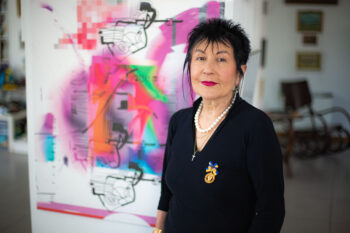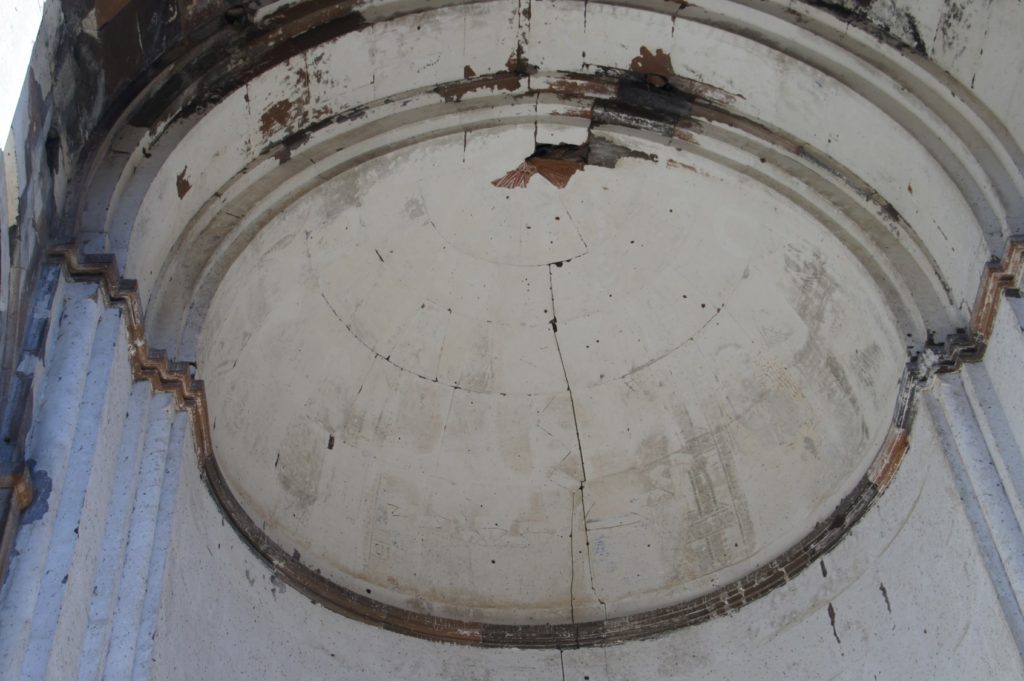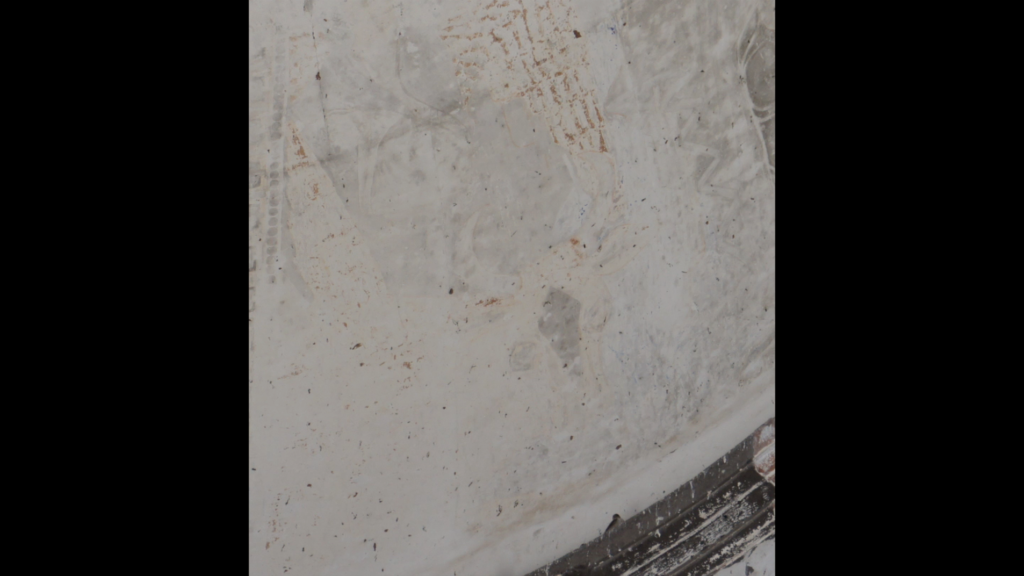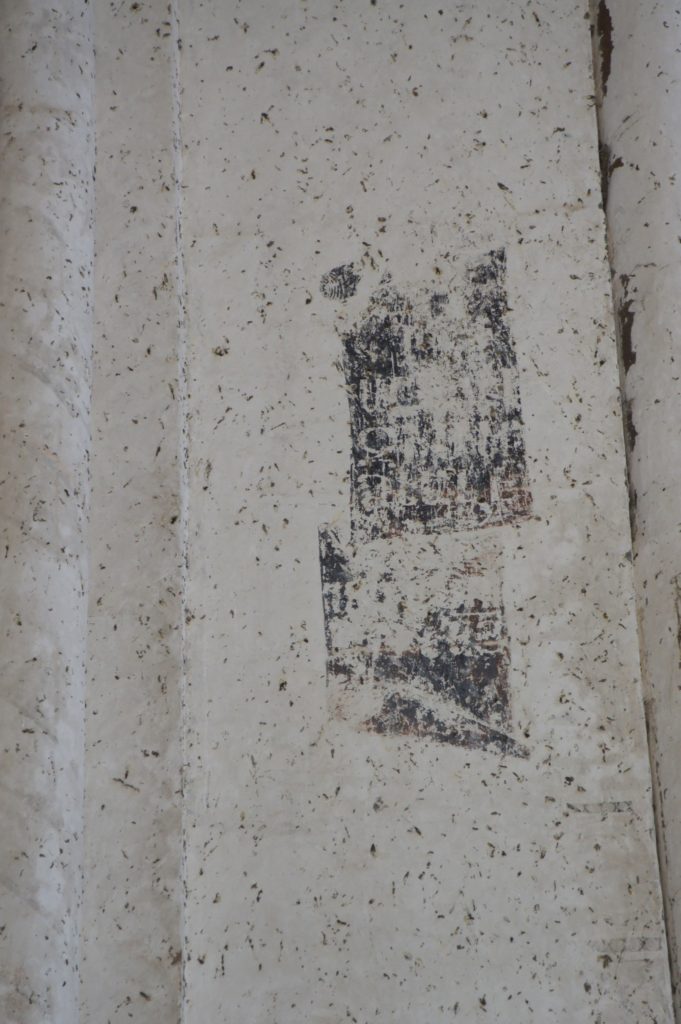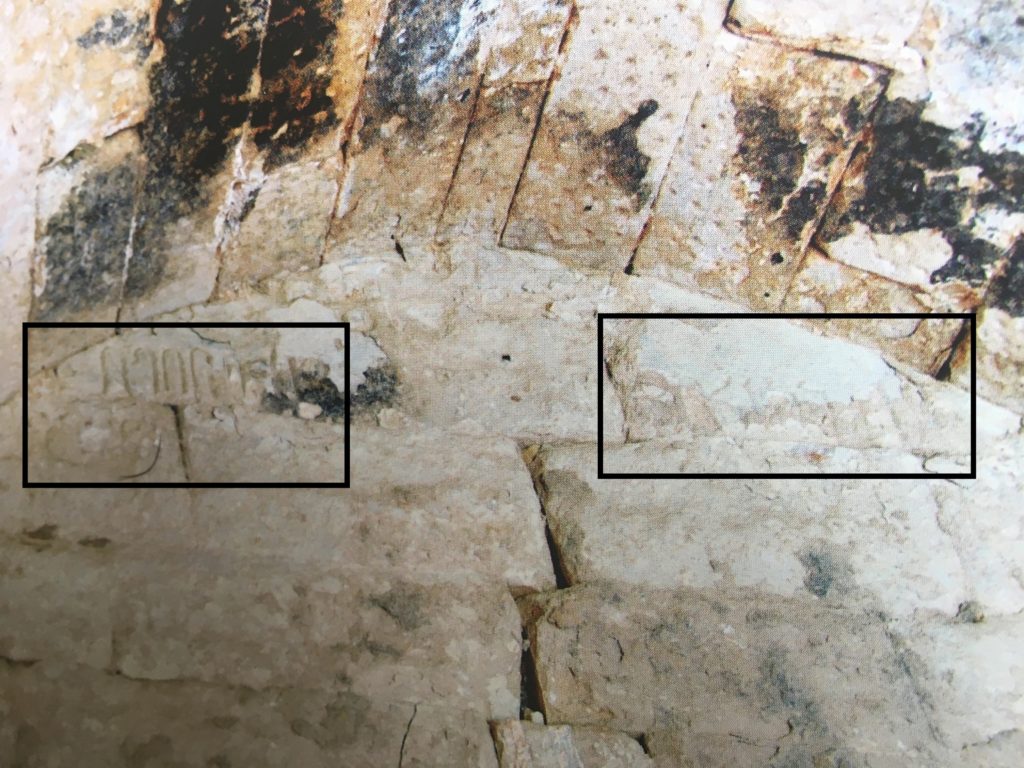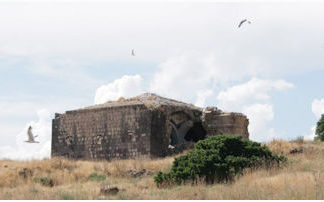SOMERVILLE, Mass. – It may have taken as much as one thousand years, but images deliberately obscured and faded are now coming to light in the famous cathedral of Ani. Dr. Christina Maranci, Arthur H. Dadian and Ara T. Oztemel Professor of Armenian Art at Tufts University, has used accessible software tools to reveal more clearly some of this art and an inscription, and she has done this all from her home in Somerville, near Boston.
It began last summer, Maranci wrote, when she was reading an undergraduate student thesis about the medieval Armenian city of Ani. The author, Atineh Movsessian, repeated the assertion of the famous art historian Sirarpie Der Nersessian that there is little evidence for Armenian wall paintings from the tenth century, and this spurred Maranci to relook at pictures she had taken of churches over the years.

Several years earlier, in her study of the Armenian church of Mren (today located in Kars province of the Republic of Turkey), she had used image adjustment software, Photoshop, on photographs she had taken during a visit there. Her naked eye was unable to make out many details that the graphics editor made discernible. With some software adjustments, she was able to reconstruct the visual program of images and inscriptions in the church.
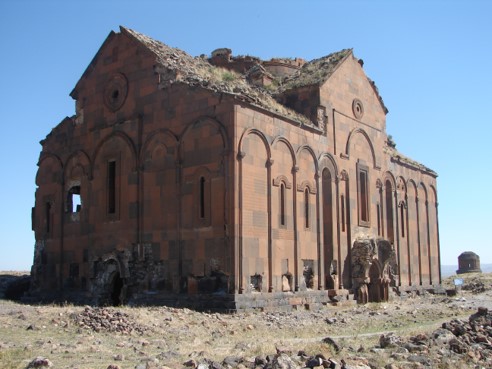
This experience led Maranci to review her photographs of the cathedral at Ani, the medieval capital of the Armenian Bagratuni kingdom. This led to the discovery of the naturalistically depicted image of an ox in the cathedral’s apse, which was hitherto unknown. An experienced researcher in the field of Armenian art, she said, “it was to my astonishment that I was confronted with this ox, no less because it appears in the most famous of Armenian churches (or at least one of the top ten).” This ox became the key to decoding a whole series of images as well as to discovering a previously unknown Biblical inscription.
The cathedral at Ani was begun in 989 under the patronage of King Smbat Bagratuni by the famous architect Trdat, and completed in 1001 with the support of Smbat’s sister-in-law Queen Katramide. Although architecturally the cathedral is well studied, the internal decorations have largely been passed over, in part because visitors during the past several centuries have had difficulty in making them out and in part because Armenian wall paintings in general have not been a subject of great study. Maranci speculated that the lack of attention to this topic may be because there are so few known examples surviving of Armenian wall paintings before the 17th century, 20 or 25 in all.
Their poor condition, plus the possibly mistaken belief that Armenians were reluctant to paint and use icons in their churches in medieval times, further discouraged attention, Maranci said.
